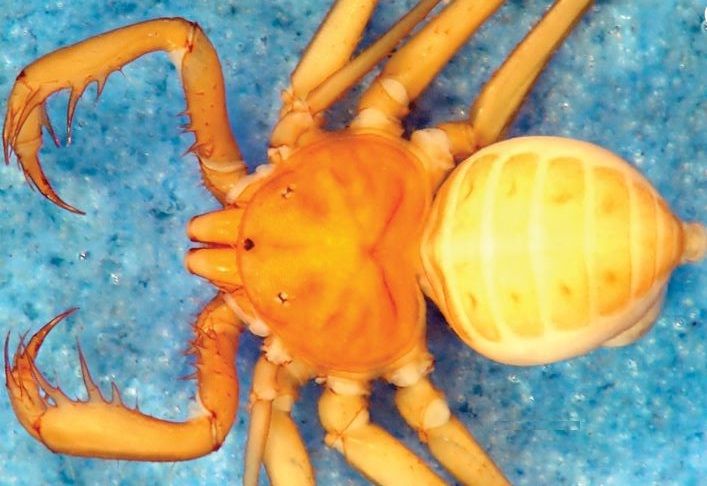
Whip spiders, also affectionately known as tailless whip scorpions, may look fearsome but they are basically harmless to humans—even if you put them on your face, as I did a couple years ago in an entomological hazing incident in the Peruvian Amazon I'd rather not discuss (but which, luckily, I got a story out of ). They are also not well-known scientifically and have long been considered one of the less-diverse groups of arachnids.
But new research shows they are more diverse than scientists thought. A study published February 17 in the journal PLOS ONE identifies eight new species of whip spiders from northern Brazil, in the Amazon rain forest.
All of these spiny freaks look pretty similar, hang out in leaf litter on the rain forest floor or in caves, and are less than an inch long, which makes them difficult to collect and tell apart, says arachnid specialist Gustavo Miranda, who along with fellow scientist Alessandro Giupponi authored the study. The project began when the two were students together at the National Museum of Brazil in Rio de Janeiro.

Whip spiders actually aren't true spiders—they lack fangs, silk glands and venom glands. But they do possess something else that's just as interesting: large, spiky pedipalps. These appendages extend from the front of their body, look rather like clawed arms and are used to grasp prey, says Miranda, now a researcher at the University of Copenhagen.
To identify the whip spiders, the pair examined the specimens closely, often under microscopes, to characterize the location of their eyes and count the number of spines on their pedipalps, both of which can distinguish different species. Another tell is the structure of the female's genitals. "The shape of the female organ has to fit perfectly to the structure where the male deposits the sperm...so small variations in the female genitalia can mean a different species," Miranda says.
Males of one of the newfound species, Charinus carajas, are much bigger than females and have very long pedipalps. These are used to fight for mates. "When more than one male is interested in the same potential partner, they stand in front of each other with the pedipalps unfolded...and measure the size of the pedipalps," Miranda says. Whichever male has the bigger pedipalps wins the female, he says.
Unfortunately, half of the newfound species are at risk because of human activities. One of the new species could be wiped out by flooding due to the ongoing construction of the Belo Monte hydroelectric dam on the Xingu River, in the Pará region in northern Brazil. And three more of the new whip spiders are threatened with extinction due to iron mining in the Carajás municipality, in the north-central Amazon, according to the study.
Uncommon Knowledge
Newsweek is committed to challenging conventional wisdom and finding connections in the search for common ground.
Newsweek is committed to challenging conventional wisdom and finding connections in the search for common ground.
About the writer
Douglas Main is a journalist who lives in New York City and whose writing has appeared in the New York ... Read more
To read how Newsweek uses AI as a newsroom tool, Click here.








